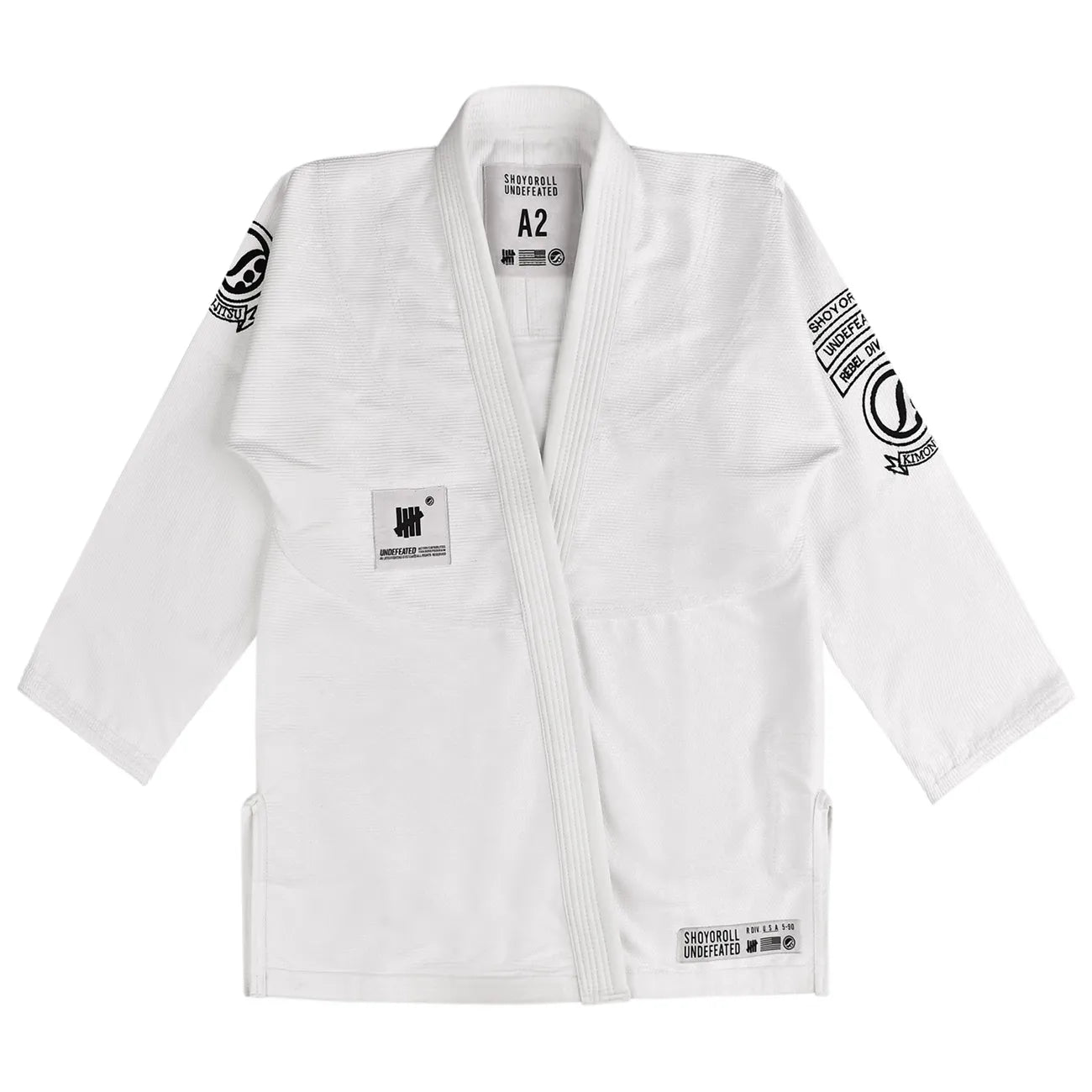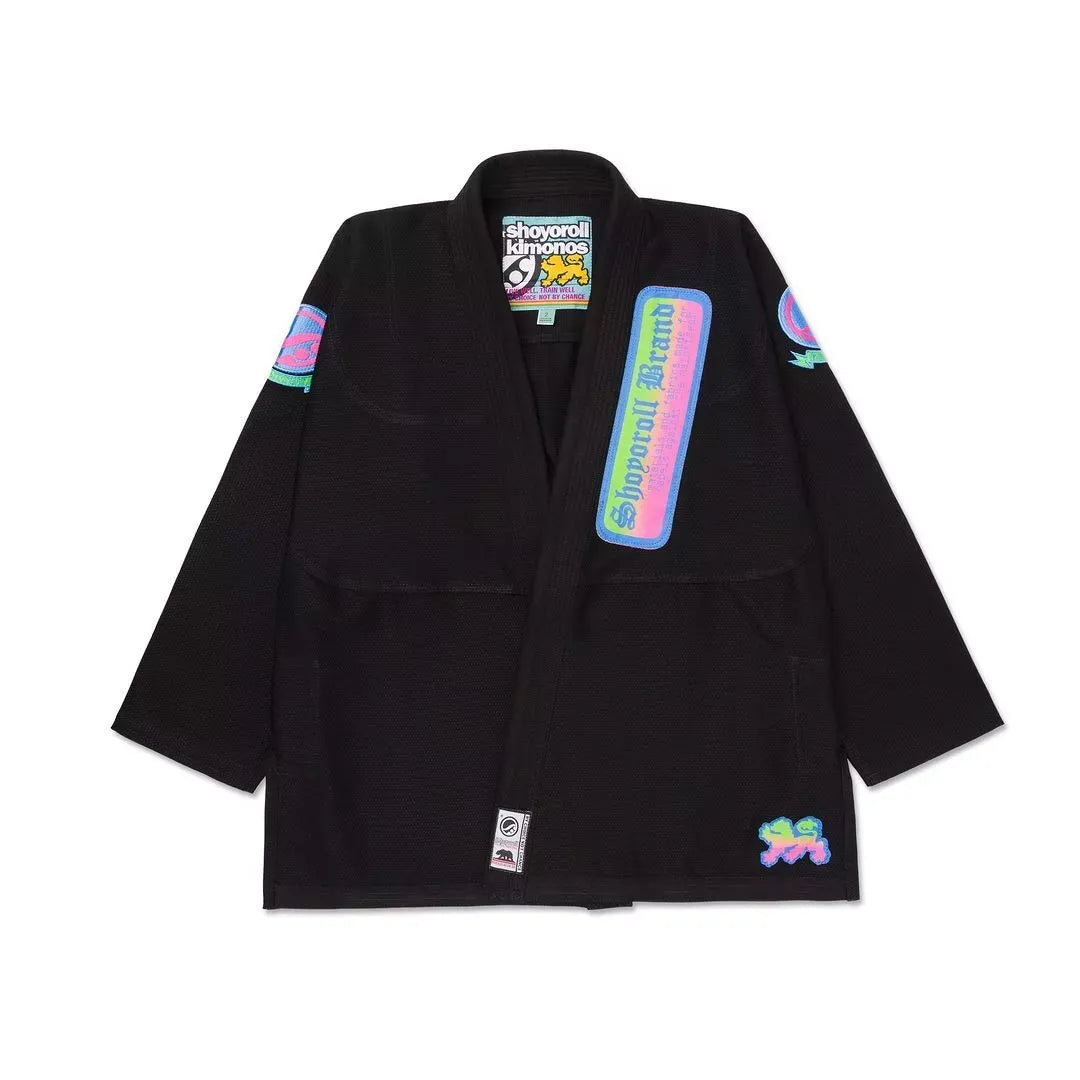The 50 Frequently Asked Questions in Brazilian Jiu-Jitsu
Table of Contents
Brazilian Jiu-Jitsu (BJJ) is more than just a martial art—it’s a journey of self-improvement, discipline, and technical mastery. Whether you’re a beginner trying to understand the basics, an experienced practitioner aiming to refine your skills, or someone looking for high-quality BJJ gear, knowing the right information can help you progress faster. At Buy BJJ, we’ve compiled this comprehensive guide answering the 50 most commonly asked questions in BJJ to help you train smarter and get the best out of your experience.
General Knowledge BJJ FAQs
Understanding the fundamentals of BJJ is essential before stepping onto the mats. This section covers what BJJ is, how it differs from Judo and Wrestling, the belt ranking system, and how long it typically takes to earn a black belt.
| You’ll also learn about the differences between Gi and No-Gi BJJ, essential beginner techniques, and the meaning behind common phrases like “OSS.” If you’re wondering how BJJ can be used for self-defense, competitions, or just as a fitness routine, this section has the answers. | 
|
BJJ is a martial art that focuses on ground fighting, submissions, and positional control. It emphasizes technique and leverage rather than brute strength, making it ideal for smaller opponents to defeat larger ones.
2. How is BJJ different from Judo or Wrestling?While Judo focuses on throws and Wrestling emphasizes takedowns and pinning, BJJ is primarily ground-based, focusing on submissions and positional dominance. In BJJ, you learn how to fight off your back and control your opponent on the ground.
3. What are the belt ranks in BJJ?The adult belt system follows this order: White, Blue, Purple, Brown, and Black. Children have a separate belt ranking system that includes more colors to keep them engaged as they develop.
4. How long does it take to earn a black belt in BJJ?On average, it takes 8-12 years, depending on consistency and dedication. Unlike some martial arts, promotions in BJJ are based on skill and experience rather than just attending classes.
5. What is the difference between Gi and No-Gi BJJ?Gi BJJ involves wearing a traditional uniform (Gi) and allows gripping the clothing, which slows down the game and adds strategic grips. No-Gi BJJ uses rash guards and shorts, focusing more on speed, agility, and body control.
6. What are some essential techniques for beginners?Beginners should focus on guard retention, basic sweeps, escapes from bad positions, and fundamental submissions like the armbar, triangle choke, and rear-naked choke.
7. What does "OSS" mean in BJJ?It’s a term of respect and acknowledgment used in the BJJ community. It can mean “yes,” “I understand,” or simply be used as a greeting among practitioners.
8. What is a submission in BJJ?A submission is a technique that forces an opponent to tap out, signifying defeat. Common submissions include joint locks (like armbars) and chokes (like the guillotine choke).
9. How do BJJ competitions work?They are divided by belt rank, weight class, and sometimes age divisions. Matches are scored based on positional control, transitions, and submission attempts. Points are awarded for dominant positions like mount and back control.
10. Can BJJ be used for self-defense?Yes! BJJ is one of the most effective self-defense martial arts because it focuses on control, leverage, and neutralizing threats without relying on strikes.
Best Selling Product

🔥 SAVE UPTO 50% - Limited Time Offer
✅ 30 Days Return & Refund Policy
🚚 Free Worldwide Shipping
BJJ Training & Progression FAQs
Training effectively is the key to long-term improvement in BJJ. This section provides guidance on how often beginners should train, the best ways to improve quickly, and how to build endurance for long rolling sessions. You’ll also find practical tips on preventing injuries, getting better at sparring, and overcoming training plateaus.
 |
Additionally, we discuss the importance of strength training, stretching routines, and the balance between drilling techniques and live sparring. Whether you’re stuck in a rut or just starting out, this section will help you make the most of your training. |
Training 2-3 times a week is ideal for building a strong foundation. This frequency gives your body enough time to recover while still reinforcing techniques. If you train too little, progress will be slow, and if you train too much, you risk burnout or injury. As you build endurance and improve, you can gradually increase your training sessions.
12. What’s the fastest way to improve in BJJ?The key to fast improvement is consistent training combined with deliberate practice. Drilling techniques repeatedly helps with muscle memory, while watching instructional videos can offer new perspectives. Taking notes after class, asking higher belts for advice, and reviewing lessons outside of training will also speed up your progress. The more engaged you are, the faster you’ll improve.
13. How can I build endurance for BJJ?Endurance in BJJ comes from a mix of cardio training and mat time. Running, jump rope, swimming, and circuit workouts improve overall stamina, while specific BJJ conditioning comes from regular rolling (sparring). Rolling at a steady pace, avoiding unnecessary muscle tension, and focusing on breathing can help you last longer during training sessions.
14. What mistakes do beginners make the most?Some of the most common beginner mistakes include using too much strength, neglecting basic techniques, ignoring defense, and not tapping early enough. Many new practitioners rely on brute force instead of proper technique, which leads to fatigue and frustration. Skipping fundamental drills and focusing only on submissions can also slow down progress. Tapping early to submissions is crucial to avoid injuries and keep learning.
15. How can I avoid injuries in BJJ?To stay injury-free, always warm up properly, stretch before and after class, and listen to your body. Don’t force submissions or try to muscle your way out of bad positions. Training with control, tapping when needed, and communicating with your training partners will help prevent injuries. Also, proper recovery—such as rest, hydration, and mobility work—plays a big role in injury prevention.
16. How do I improve at rolling (sparring)?To get better at sparring, roll as often as possible while focusing on learning rather than winning. Try to apply techniques you’ve learned in class, experiment with new positions, and work on specific weaknesses. Rolling with more experienced training partners can expose gaps in your game and help you learn faster. It’s also important to stay calm, breathe properly, and avoid unnecessary tension while sparring.
17. Is strength training necessary for BJJ?Yes, but technique should always come first. Strength training can help improve overall athleticism, grip strength, and injury resistance, but relying on brute force instead of proper technique will limit progress. Functional exercises like squats, deadlifts, kettlebell swings, and bodyweight movements like pull-ups and push-ups can complement your BJJ training. A well-rounded approach that includes both technique and strength will make you a more effective grappler.
18. What are the best stretches for BJJ?Flexibility is important in BJJ, and a combination of dynamic and static stretching helps improve mobility. Before training, dynamic stretches like hip circles, arm swings, and lunges prepare the body for movement. After training, static stretches like hip openers, hamstring stretches, shoulder mobility drills, and spinal twists help with recovery and injury prevention. Yoga and mobility routines can also enhance flexibility over time.
19. How do I break through a training plateau?| Plateaus happen to everyone, but you can overcome them by trying new techniques, analyzing your training, and setting short-term goals. Sometimes, a plateau means it’s time to focus on a different part of your game, such as improving defense or working from a weaker position. Asking for feedback from instructors, watching competition footage, and keeping a training journal can help identify areas for improvement. Staying patient and motivated is key to pushing past a plateau. | 
|
Drilling and sparring serve different purposes in BJJ training. Drilling involves repeating movements in a controlled environment to build muscle memory and perfect technique. This is essential for learning new techniques and reinforcing fundamentals. Sparring (rolling) is live training against a resisting opponent, where you test your techniques under pressure. Both are necessary for improvement—drilling helps develop precision, while sparring teaches adaptability and timing.
Read More: The Mental and Emotional Benefits of Jiu Jitsu
Best Selling Product

🔥 SAVE UPTO 50% - Limited Time Offer
✅ 30 Days Return & Refund Policy
🚚 Free Worldwide Shipping
BJJ Gear & Products FAQs
Choosing the right BJJ gear is essential for comfort, performance, and durability. This FAQ covers everything you need to know about BJJ products, including gis, rash guards, shorts, and custom gear. Whether you're a beginner or an experienced practitioner, you'll find helpful insights to make the best choice for training and competition.Choosing the right BJJ Gi depends on your training needs and preferences. Consider the weight (light for competition, heavy for durability), material (cotton for comfort, blends for strength), and fit (slim vs. standard). If you train often, a durable Gi with reinforced stitching is best.
22. What size BJJ Gi should I buy?BJJ Gi sizes are based on height and weight. Brands have different size charts, but common sizes range from A0 (smallest) to A5 (largest). If you're between sizes, consider shrinkage after washing or look for pre-shrunk options. Always check the brand's size guide before buying.
23. How do I wash and care for my BJJ Gi?Wash your Gi in cold water to prevent shrinkage and hang dry instead of using a dryer. Avoid bleach as it weakens fabric. Washing after every session prevents bacteria buildup and bad odors.
24. What color BJJ Gi should I get?The most common BJJ Gi colors are white, blue, and black, as these are typically allowed in competitions. Some gyms have specific color rules, so check before buying. If you're training casually, you can choose any color or design you like. Just remember, lighter colors may show stains more easily, while darker Gis can fade over time.
25. What is a rash guard, and do I need one for BJJ?A rash guard is a tight-fitting, moisture-wicking shirt designed to prevent skin irritation and injuries. In No-Gi BJJ, it is essential, and in Gi training, it helps with comfort and hygiene.
26. What are the best BJJ shorts for No-Gi training?Look for durable, stretchy, and IBJJF-approved shorts with a secure waistband. Brands like RVCA, Shoyoroll, and Hayabusa offer great options.
27. Can I wear a mouthguard in BJJ?Yes! A mouthguard protects your teeth and jaw during training and competition. Many practitioners use custom-fitted or boil-and-bite mouthguards for comfort and safety.
28. What is the difference between a lightweight and heavy BJJ Gi?Lightweight Gis (250-450 GSM) are great for hot climates and competition, while heavy Gis (550+ GSM) are more durable and harder for opponents to grip. Choose based on your needs.
29. How often should I replace my BJJ Gi?|
|
If you train 3-5 times a week, a Gi may last 1-2 years. Signs it's time to replace: excessive wear, tearing, or shrinkage affecting the fit. |
Yes! Many brands offer women’s and kids’ Gis with tailored fits. Women’s Gis typically have a more tapered cut, and kids’ Gis come in smaller sizes with adjustable features for growth. For more BJJ gear, check out our Jiu Jitsu Gi collection
Competition & Rules FAQs
31. What are the IBJJF rules for competition?The International Brazilian Jiu-Jitsu Federation (IBJJF) follows a point-based system, where athletes earn points for positions like sweeps, passes, and mounts. Matches can be won by submission, points, or referee decision. Certain moves and submissions are restricted based on belt level.
32. How do BJJ weight classes work?BJJ competitions have weight divisions, which vary by organization. You must weigh in with or without your Gi (depending on the rules) before competing. If you don’t make weight, you may be disqualified or moved to a higher division.
33. Can I compete in BJJ as a beginner?Yes! Many competitions have beginner divisions, usually based on belt rank (white belt for beginners). Competing early in your journey helps you gain experience, test your skills, and improve under pressure.
34. What are the most common penalties in BJJ tournaments?Penalties include stalling (not engaging), illegal grips (grabbing fingers), reaping (crossing your leg over an opponent's knee in a dangerous way), slamming, and unsportsmanlike conduct. Too many penalties can result in disqualification.
35. How do I prepare for my first BJJ competition?Train with intensity, focus on your game plan, and simulate competition rounds in the weeks leading up. Work on takedowns, guard passing, and submissions, and rest properly before the event.
36. What’s the difference between points and submission-only tournaments?Points-based tournaments (like IBJJF) reward positions and control, while submission-only tournaments have no points—only submissions matter. Each format requires a different strategy.
37. What submissions are illegal in BJJ competitions?Illegal moves depend on belt level and age. White belts can’t do heel hooks, neck cranks, or knee reaping. Some advanced techniques, like twisters or calf slicers, are only allowed at higher levels.
38. How do I deal with competition anxiety?Competition nerves are normal! Prepare well, focus on your breathing, visualize success, and trust your training. Staying calm and confident helps you perform at your best.
39. What should I eat before a BJJ competition?Eat a light meal with carbs and protein a few hours before competing. Good options include oatmeal, fruit, chicken, or rice.
40. Can you compete in both Gi and No-Gi at the same tournament?Yes, many tournaments offer both Gi and No-Gi divisions. You just need to sign up for both and be ready for different rule sets and pacing between rounds. For more details on competition gear, visit our BJJ Gi Collection and No-Gi Collection
Lifestyle & BJJ Culture FAQs
| BJJ is more than just a sport—it’s a lifestyle. This FAQ explores the culture, traditions, and daily habits of BJJ practitioners. From etiquette and mindset to community and training philosophies, discover what makes Brazilian Jiu-Jitsu a unique way of life. | 
|
BJJ is a full-body workout that burns calories, builds muscle, and improves cardio endurance. Rolling (sparring) is high-intensity, helping with fat loss and conditioning. Regular training also improves mobility, flexibility, and core strength.
42. What is the best way to recover from hard BJJ training?Prioritize hydration, stretching, and proper sleep. Foam rolling and mobility exercises help with soreness. Eating protein and healthy carbs speeds up muscle recovery. Light drills or yoga can also help keep your body loose.
43. What are the mental benefits of training BJJ?BJJ builds discipline, patience, and problem-solving skills. It helps reduce stress, improve focus, and boost self-confidence. Many practitioners find it meditative, as it forces you to be present in the moment.
44. How do I deal with gym politics and hierarchy?Every gym has a ranking system and unspoken rules. Show respect to instructors and higher belts, but don’t get caught up in drama. If a gym feels toxic or unwelcoming, it’s okay to find a better training environment.
45. Can I train BJJ while traveling?Yes! Many BJJ gyms welcome drop-in students. Pack your Gi or No-Gi gear, check gym policies online, and always be respectful of house rules. Some gyms may charge a small mat fee.
46. Is BJJ safe for kids?Yes, BJJ is great for kids! It teaches discipline, self-defense, and body coordination. Classes are structured to be safe, and instructors focus on technique over strength. Parents should ensure their child is training in a well-supervised program.
47. Can I train BJJ if I have previous injuries?It depends on the injury. Consult a doctor first, then talk to your coach about modifications. Many people with past injuries train safely by avoiding risky movements and focusing on technical rolling instead of intense sparring.
48. What’s the etiquette when visiting a new BJJ gym?Be respectful—greet the instructor, ask about rules, and follow gym culture. Avoid going too hard in rolls, and show respect to higher belts. Keep hygiene in check (clean Gi, trimmed nails), and thank your training partners after class.
49. How do I stay motivated in BJJ?Set small goals, track progress, and focus on learning, not just winning. Avoid comparing yourself to others—everyone learns at their own pace. Watching BJJ matches, trying new techniques, or taking breaks when needed can help prevent burnout.
50. Can I train BJJ without competing?Absolutely! Many people train for self-defense, fitness, or fun without ever competing. BJJ is about personal growth, and you can enjoy its benefits without stepping into a tournament.
Best Selling Product

🔥 SAVE UPTO 50% - Limited Time Offer
✅ 30 Days Return & Refund Policy
🚚 Free Worldwide Shipping
Final Thoughts: Frequently Asked Questions in Brazilian Jiu-Jitsu
Brazilian Jiu-Jitsu is a challenging yet rewarding journey that requires dedication, patience, and a willingness to learn. Whether you're a beginner trying to understand the basics or an advanced practitioner looking to refine your skills, asking the right questions is key to growth.
By addressing these 50 most commonly asked questions, we’ve covered essential topics like training frequency, endurance building, technique improvement, injury prevention, and more. BJJ is not just about physical ability—it’s also about strategy, discipline, and continuous learning.
The most important thing to remember is progress takes time. Stay consistent, be open to feedback, and enjoy the process. Keep asking questions, keep training, and keep evolving—both on and off the mats. Oss! 🥋💪









